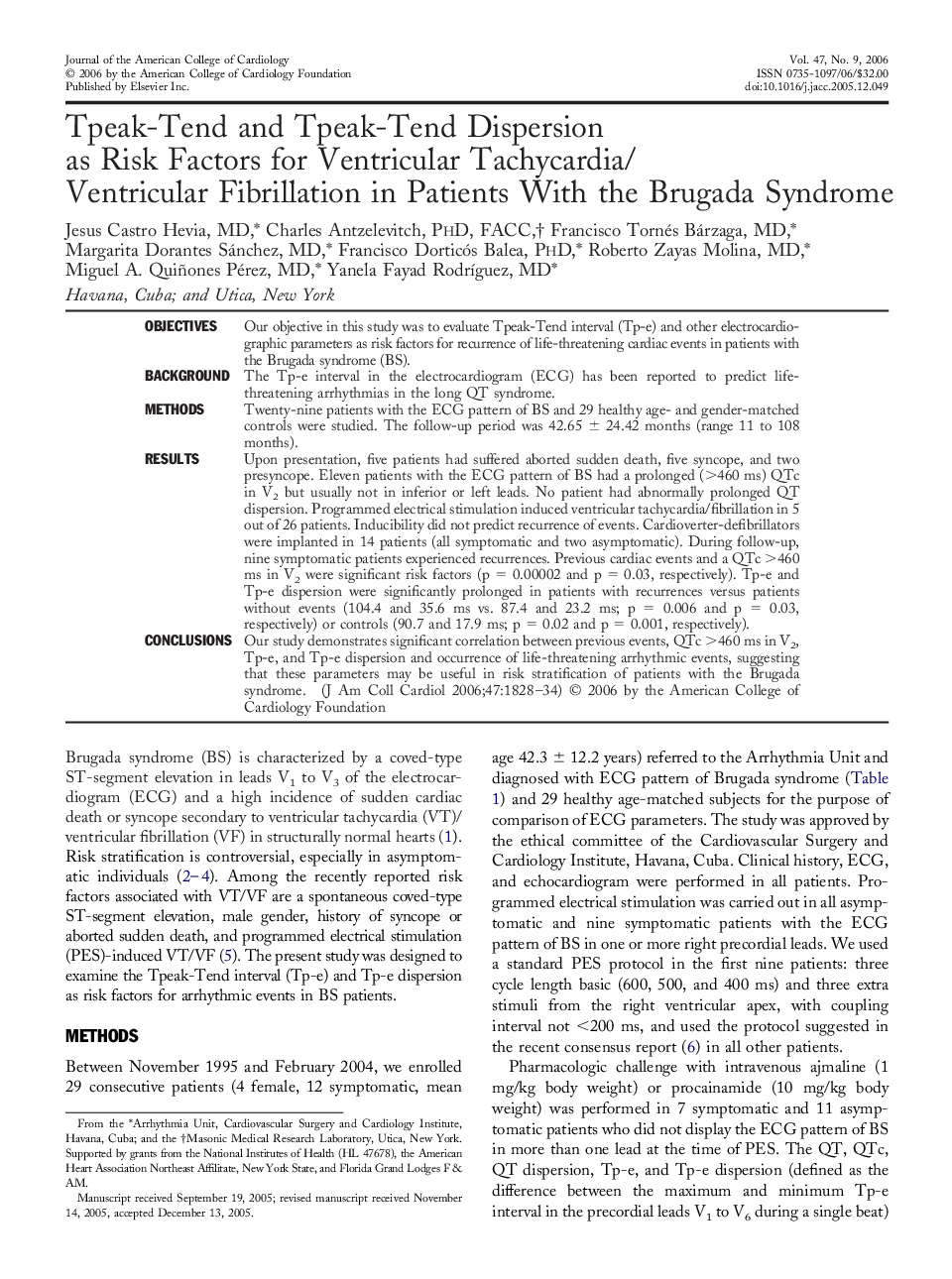| کد مقاله | کد نشریه | سال انتشار | مقاله انگلیسی | نسخه تمام متن |
|---|---|---|---|---|
| 2955416 | 1577513 | 2006 | 7 صفحه PDF | دانلود رایگان |

ObjectivesOur objective in this study was to evaluate Tpeak-Tend interval (Tp-e) and other electrocardiographic parameters as risk factors for recurrence of life-threatening cardiac events in patients with the Brugada syndrome (BS).BackgroundThe Tp-e interval in the electrocardiogram (ECG) has been reported to predict life-threatening arrhythmias in the long QT syndrome.MethodsTwenty-nine patients with the ECG pattern of BS and 29 healthy age- and gender-matched controls were studied. The follow-up period was 42.65 ± 24.42 months (range 11 to 108 months).ResultsUpon presentation, five patients had suffered aborted sudden death, five syncope, and two presyncope. Eleven patients with the ECG pattern of BS had a prolonged (>460 ms) QTc in V2but usually not in inferior or left leads. No patient had abnormally prolonged QT dispersion. Programmed electrical stimulation induced ventricular tachycardia/fibrillation in 5 out of 26 patients. Inducibility did not predict recurrence of events. Cardioverter-defibrillators were implanted in 14 patients (all symptomatic and two asymptomatic). During follow-up, nine symptomatic patients experienced recurrences. Previous cardiac events and a QTc >460 ms in V2were significant risk factors (p = 0.00002 and p = 0.03, respectively). Tp-e and Tp-e dispersion were significantly prolonged in patients with recurrences versus patients without events (104.4 and 35.6 ms vs. 87.4 and 23.2 ms; p = 0.006 and p = 0.03, respectively) or controls (90.7 and 17.9 ms; p = 0.02 and p = 0.001, respectively).ConclusionsOur study demonstrates significant correlation between previous events, QTc >460 ms in V2, Tp-e, and Tp-e dispersion and occurrence of life-threatening arrhythmic events, suggesting that these parameters may be useful in risk stratification of patients with the Brugada syndrome.
Journal: Journal of the American College of Cardiology - Volume 47, Issue 9, 2 May 2006, Pages 1828–1834